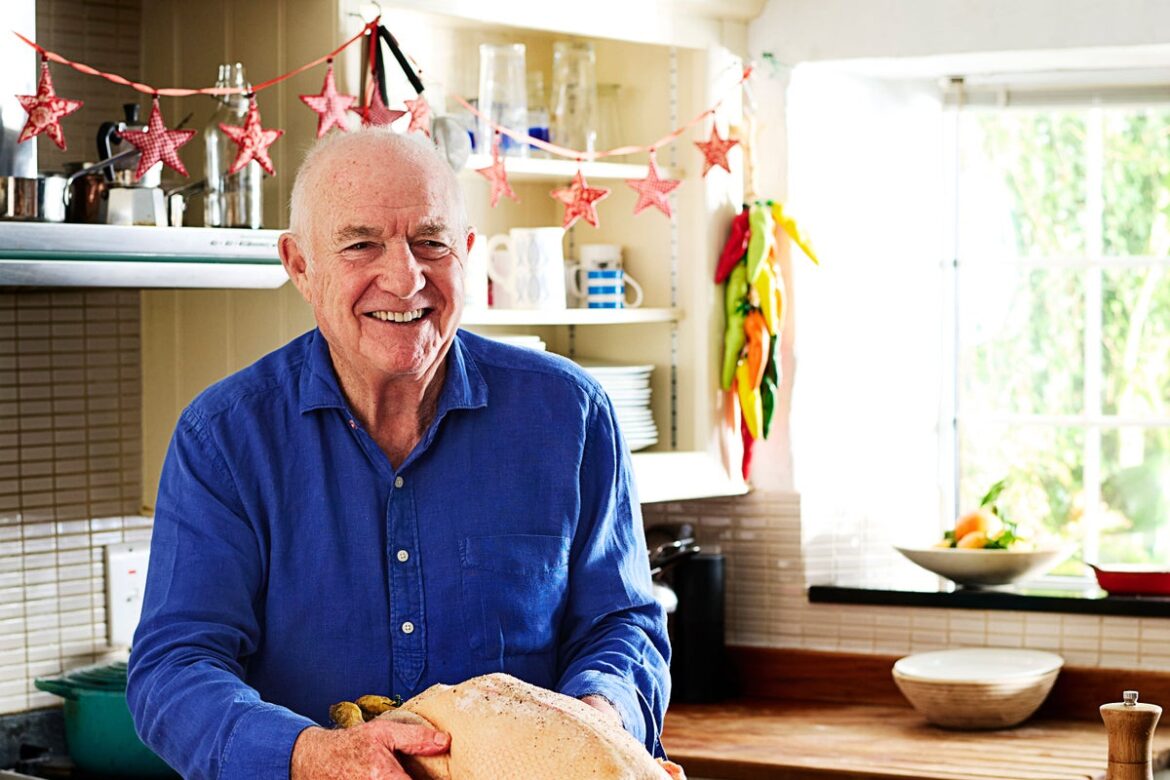Preparing a festive feast at home presents a unique culinary challenge, even for seasoned cooks.
Unlike a professional restaurant kitchen where chefs specialise in a few dishes per course, the home cook is tasked with orchestrating an entire multi-course meal single-handedly. This demanding scenario underscores the critical importance of timing, a point highlighted by acclaimed TV chef Rick Stein.
“When you’re cooking at home, you have to do everything,” Stein observes, “therefore your timing has to be really good. In a restaurant kitchen you’re doing four or five things really, and nothing else, also they’re all part of the same course.”
Stein, who has recently released his inaugural festive cookbook, Rick Stein’s Christmas, aims to demystify the process, offering strategies to manage the extensive preparations “to do it all painlessly.”
His core advice revolves around forward planning: “Don’t leave everything until Christmas morning, there are many, many things that you think need to be done at the last minute – they really don’t.”
His new collection of recipes, designed to be prepared over the fortnight leading up to Christmas, spans from elegant canapés – such as mini brioche toasts with whipped feta, fresh figs, and pickled walnuts – to sophisticated starters like Jerusalem artichoke soup with crispy bacon.
For show-stopping desserts, he suggests a semifreddo cheesecake with clementine and Campari syrup, or a classic Black Forest trifle. And, in true Stein fashion, seafood features prominently.

Rick Stein and his wife, Sass (James Murphy/PA)
Here, the celebrated chef shares his essential tips for ensuring the main Christmas meal is a resounding success.
The Bird
For Stein, the traditional turkey or goose remains paramount. “I think Christmas is special in that it is about celebrating the same things or every year,” he explains.
“I really quite like the repetitiveness because it only comes around once a year. So turkey or goose with all the trimmings is what it’s all about. I would feel like I’d sort of let people down if it was just roast beef, even if it was absolutely wonderful roast beef.”
While his book does offer alternatives like venison bacon and prune shortcrust pie or glazed bone-in Christmas ham, the bird holds a special place.
The most common error with turkey, he notes, is “overcooking it. It’s just a big chicken really. The biggest mistake is getting too nervous and overcooking it. People worry they’re going to get food poisoning if it’s undercooked, which is very, very unlikely.”
His solution is simple: “Buy yourself a [oven] temperature probe to make sure you don’t overcook it. I think the safe temperature for a turkey is something like 70 degrees. Once you start going over that, you get this problem with dry meat.” He also suggests wrapping the bird in buttered muslin, but stresses that the ultimate goal is “really about not cooking it too long.”

Rick Stein and his wife, Sass and son, Jack ((James Murphy/PA))
Gravy
Stein’s advice for gravy often surprises people: “Don’t make your gravy at the last minute.”
He advocates for preparing a rich stock the day before using giblets from a free-range turkey or goose, supplemented with chicken stock.
“I start with a little bit of duck fat and put a bit of flour in (I don’t like a lot of flour in my gravy). I cook that out, then make the gravy, because then I can absolutely make sure it’s quite intensely flavoured.”
On Christmas Day, with the gravy already made, he simply deglazes the roasting tray with some of the prepared gravy to capture all the rich pan juices.
Roast Potatoes
For Stein, roast potatoes are as crucial as the gravy. The secret lies in the parboiling: “I go for seven minutes in lightly salted water,” he advises.
“Seven minutes is enough if you’re using Maris Piper or King Edward, to make them a bit crumbly on the outside.” After draining, he shakes them vigorously in the pan or colander to roughen the edges, then sprinkles them with polenta or semolina for extra crispiness.
He often parboils them the day before, leaving them out rather than refrigerating, and always uses goose or duck fat for cooking. “But the secret, I think, is having a fairly firm potato and not in any way elastic. It’s got to have a sort of brittleness but not too brittle.”
Stuffing Choices
Stein prefers to cook stuffing separately rather than inside the bird. For goose, he opts for a sage and onion stuffing, explaining, “because goose is so rich, you want something quite bland to serve with it.” With turkey, which has a milder flavour, he suggests a chestnut or sausage meat stuffing, as “it can take a bit more flavour in the stuffing.”
Brussel Sprouts
Perhaps surprisingly, Stein admits to cutting corners with sprouts: “I have cut corners by buying pre-peeled from a supermarket.” He even conducted a blind taste test one year and found no discernible difference. Eschewing the classic chestnut and bacon combination, he prefers sprouts served simply.
“It’s not a sort of purity,” he clarifies. “It’s the balance of the whole meal. If you put stuff with every veg, they’re just fighting against each other.”
Rick Stein’s Christmas: Recipes, Memories & Stories for the Festive Season, published in hardback by BBC Books, is available now, priced £28. Photography by James Murphy.


Dining and Cooking